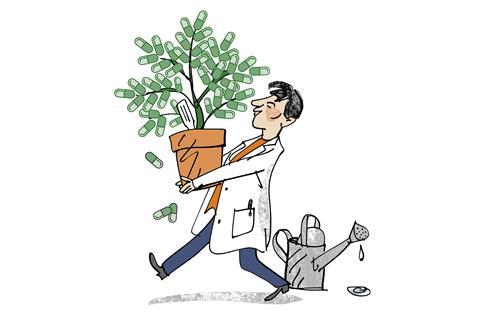Collaborative natural products research in the Philippines aims to produce cheaper and more effective medicines

When I started my research project, I became part of the story of medicinal plants and herbal medicines in the Philippines. This is long and intertwined with the country’s rich history of trade and colonisation. Among its Asian neighbours, the Philippines is home to some of the most diverse flora and fauna, contributing to more than 5% of the world’s plant biodiversity. However, countries such as China, Vietnam and India place much more emphasis on the use of traditional medicines over western medicines – mostly due to the 300 years the Philippines spent colonised by western countries, who introduced their own forms of therapeutics.
While today the country is very much independent and capable of producing top quality products, the research and development of traditional and herbal medicines still needs more work. The Covid-19 pandemic highlighted the potential benefits of well supported natural products research. The Philippines was criticised for having one of the poorest pandemic responses, and one of the reasons for this was our dependency on western approaches. Luckily, this helped us understand the flaws in our system and through government funding, local scientists and local pharmaceutical companies, we are trying to find more sustainable solutions for local health crises.
I decided to find a way to contribute to Covid-19 research done in the country, but the two year lockdown meant I had to find ways to tackle the problem without wet lab work. I settled on proposing a computational study which deals with how we can use compounds from Philippine plants to reduce the risk of Covid-19 infection. This allowed me to work with compounds identified from my research lab in the chemistry department and test them using a modelling method called molecular docking.
I quickly realised that natural products research requires a good level of determination: only one of the more than 50 compounds that I tested had potential as a drug against Covid-19. Nevertheless, this data can hopefully contribute to other laboratories that work on the same problem, providing a starting point for further testing. Limited resources in individual labs means collaborating is the best way for us to develop new drugs.
One benefit of the growing interest in natural products research is that different labs can focus on specific diseases and techniques while also having resources that are useful in larger projects. One of my batchmates, Leo Lenon, works with plant extracts that aim to slow down the production of sugars in our body. His approach involves testing extracts using assays that allow him to determine how effective a solution is at inhibiting an enzyme. His lab also uses bioactivity guided fractionation, a technique that allows researchers to quickly screen many plant extracts to identify which ones are most likely to have bioactive components.
We can do so much more with the resources we have
As Leo told me, one major factor for success is working in a country with a rich biodiversity such as the Philippines. This biodiversity also provides researchers with diverse opportunities for collaboration, with organic synthesis, marine biology, and molecular biology labs working together on large, ambitious projects that ultimately aim to identify new medicinal compounds.
The advancement of herbal and traditional medicines in our country holds great potential for further enhancement. Despite the commendable initiatives undertaken by the government’s Department of Science and Technology in launching significant projects to underscore the importance of natural products research, there remains ample opportunity for growth and refinement. Phil Cruz, a recent master’s graduate who works at Herbanext, one of the country’s leading manufacturers of herbal supplements and spray-dried plant extracts, told me that larger pharmaceutical companies don’t always see the potential benefit of herbal medicines. This probably roots from the lack of urgency for pharmaceutical companies to develop new products, especially since the development of new drugs can take millions of pesos-worth of resources.
If industry leaders can be encouraged to focus more on local research, we could significantly bolster our capacity to transform research endeavours into finalised products. This shift is poised to yield products that are not only more cost-effective to manufacture and acquire than their Western counterparts but also diminishes our reliance on resources sourced from abroad.
Doing research on natural products and herbal medicines is not easy. It requires hours of work over many months or even years, with little guarantee of success. Despite knowing this, many Filipino scientists still pursue natural products research, often devoting a large chunk of their time and effort because they believe that we can do so much more with the resources we have. What keeps me going is knowing that there are others out there who share my dream and who work towards the same goal of providing more for Filipinos using our own natural resources.
Additional information
This article was produced in collaboration with the Creative Tuition Collective.
Creative Tuition Collective (CTC): Innovative and inclusive education is a non-profit organisation aiming to equalise the educational playing field. CTC strives to provide young people from low income backgrounds a free tuition service with holistic, high-quality tutoring, extracurricular opportunities and mental health support groups. With a passion and enthusiasm to teach and innovate education, CTC aims to not only develop the knowledge and self-assurance of young people in STEM but to also better prepare them for beyond the classroom. By assembling a diverse team within CTC along with specialist tutors, collaborating partners and invited speakers, CTC will tackle the lack of belonging, self-confidence and other barriers facing young people through an intersectional and progressive lens.












No comments yet